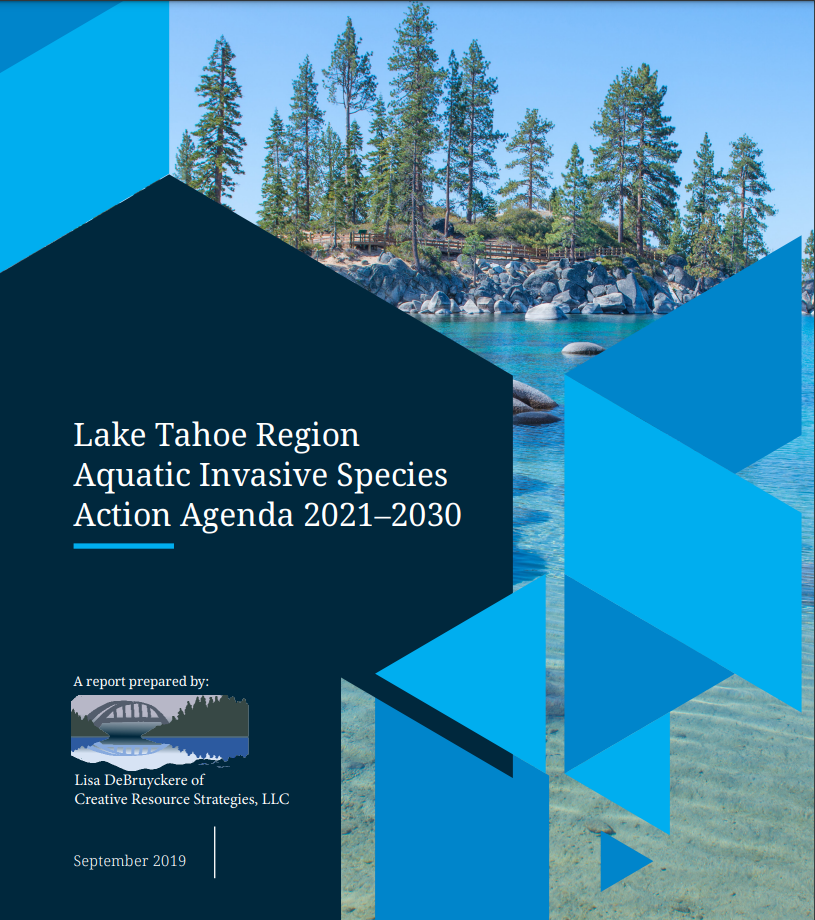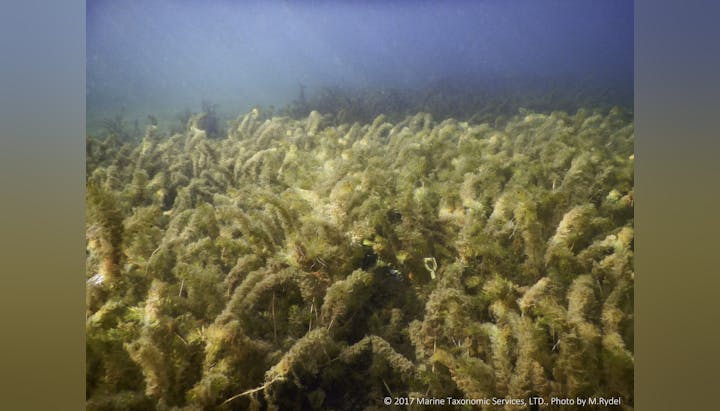Tahoe AIS Control
Lake Tahoe Aquatic Invasive Plant Control Program
Protecting Lake Tahoe from aquatic invasive species (AIS) starts with early detection, prevention, and strategic control. While infestations can be difficult and costly to manage, targeted efforts over the past five to seven years have successfully controlled satellite populations. The Lake Tahoe Aquatic Invasive Species Coordination Committee (AISCC)—a coalition of 40 public, private, and tribal stakeholders—oversees AIS management. Co-chaired by Tahoe RCD and the Tahoe Regional Planning Agency (TRPA), this committee leads AIS prevention and control efforts in the region.
Tahoe RCD also spearheads the Nearshore Aquatic Weed Working Group (NAWWG), which focuses on addressing the spread of invasive aquatic plants and their impact on Lake Tahoe’s nearshore environment. In 2009, the AISCC developed the Lake Tahoe Aquatic Invasive Species Management Plan, updated in 2014 and approved by the governors of California and Nevada, as well as the federal Aquatic Nuisance Species Task Force. In collaboration with the NAWWG and the AISCC, Tahoe RCD and TRPA have successfully implemented projects to control and manage infestations in Nevada and California through the Lake Tahoe Aquatic Invasive Plant Control Program (Control Program). In 2019, the Lake Tahoe Region Aquatic Invasive Species Action Agenda 2021-2030 was released.

The Lake Tahoe Region Aquatic Invasive Species Action Agenda (2021–2030) outlines a two-phase approach to AIS control:
- Phase I (2021–2025): Focuses on aggressively treating and reducing AIS while conducting environmental review and testing long-term management strategies for the Tahoe Keys, the largest infestation in the lake. The goal is to bring invasive plant populations to maintenance levels—or eradicate them entirely.
- Phase II (2026–2030): Focuses on reducing invasive plants and fish in the Tahoe Keys while continuing AIS control efforts in other parts of the lake.
Why It Matters
The Action Agenda enhances AIS control efforts by:
✅ Increasing the pace and scale of treatments
✅ Identifying priorities for AIS investments
✅ Maximizing effectiveness and return on investment
✅ Establishing new performance metrics and monitoring systems
✅ Expanding capacity to achieve long-term goals
✅ Supporting an all-species approach to invasive management
Through collaboration with regional partners, Tahoe RCD plays a key role in implementing AIS control strategies and protecting Lake Tahoe’s waters for future generations.
Lake Tahoe Aquatic Plant Monitoring and Evaluation Program

The Aquatic Plant Monitoring Program is designed to collect, analyze, and report data on aquatic plant populations in Lake Tahoe, with a focus on informing invasive plant control efforts.
This monitoring and evaluation plan provides standardized protocols for nearshore managers to consistently collect and report data on aquatic plant bed composition, abundance (percent cover), extent, and distribution across the lake’s nearshore zone, marinas, and stream mouths.
Designed as a stand-alone resource, the plan can be implemented by agencies or contractors with the necessary expertise. It is also a living document, allowing for updates to field protocols, analysis methods, and reporting approaches as needed.
The Lake Tahoe Aquatic Invasive Species Coordinating Committee (AISCC), co-chaired by TRPA and Tahoe RCD, is a bi-state cooperative that provides direction for addressing AIS issues in the Region, and is comprised of 40 public and private entities and additional stakeholders. Guided by the AIS Action Agenda and the results of the 2018 Lake-wide Aquatic Plant Survey, the AISCC has identified and worked together to fund priority control projects.

Funding partners have included California Tahoe Conservancy, Elk Point Country Club Homeowners’ Association, League to Save Lake Tahoe, Nevada Division of State Lands, Tahoe Fund, Tahoe Keys Property Owners Association, Tahoe Regional Planning Agency, Truckee River Fund, and more. The contributions of all of these partners ensure that resources are available to address these infestations.



